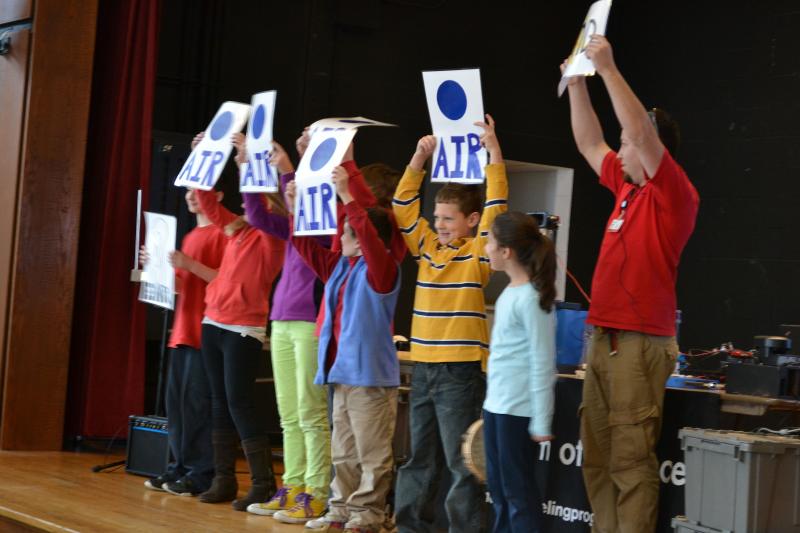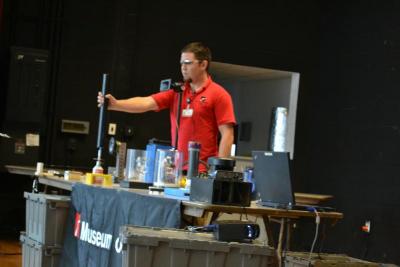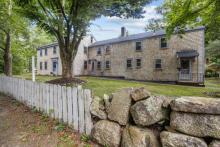Museum of Science breaks the sound barrier at Old Hammondtown
It’s easy to make music, says Museum of Science educator George Pechmann. Just slap your legs twice, clap your hands once, repeat a few times over and you’ve got the beat for “We Will Rock You.”
On Friday, March 9, Pechmann visited the fourth-, fifth- and sixth-grade students of the Old Hammondtown School as part of the museum’s traveling education programs. There, he presented “Sounds of Science,” a new program offered by the museum that examines the movement and creation of sound.
“Pitch, volume and rhythm are all ways to manipulate sound,” he said. “By clapping to [‘We Will Rock You’] we are arranging those sounds in a particular way to make music.”
Vibration, he said, is how we hear ourselves when we speak because the small bones and hairs inside of our ears feel the vibration of our vocal cords.
“When they vibrate our brain translates those to sound,” he said.
Sound moves through air molecules and to demonstrate this, Pechmann and his seven student volunteers practiced with a tambourine. The students stood close together to show how one vibration from the tambourine sets off another in the air molecules and travels to the ear.
With the help of another volunteer, Pechmann demonstrated how an alarm clock inside of a closed jar could have a different pitch of noise. By removing most of the air from the jar with a vacuum pump, Pechmann and the student lowered the noise of the alarm because the sound had less air molecules to travel through.
Then, they broke the sound barrier.
With a bullwhip, Pechmann created a “sonic boom” when he cracked the whip against the floor. The end of the whip, he said, moves through the air faster than the speed of sound, 770 miles per hour, and breaks the sound barrier.
Pechmann, who built this program for the museum, said he was excited to blend arts with science by demonstrating rhythm in music.
“You can use science to explain a lot of things about the arts,” he said. “You see that when you mix colors to see what happens or when you change the pitch of a sound in music.”
Debra Nettles, Chair of the Arts and Humanities Committee for the Mattapoisett Parent Teacher Association, said she looks for programs to bring to the elementary schools such as the ones offered by the Museum of Science because they are tailored to what the students are learning in the classroom.
“We try to stick with the curriculum,” Nettles said. “This program is brand new so I’m really excited about it."
Pechmann said he and his team try to get children interested in science.
“We want them to know that it’s not all stuffy old people," he said. "With science, you have a process that anybody can do. You ask a question and see if it works."


















